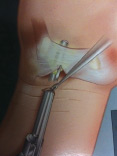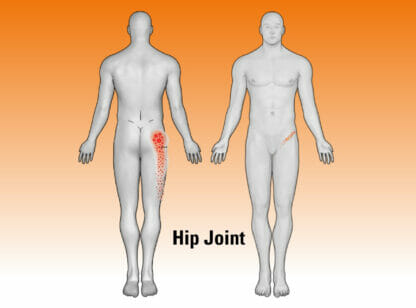Recently I attended a symposium called “New Solutions to Acute and Chronic Pain.” There were many things of interest throughout the 4-day event, but I especially want to share the nutrients holistic doctor Wally Schmitt, DC, discussed to specifically target connective tissues and pain management following a joint injury.1
As a nutritional consultant I have many clients in some degree of chronic or acute joint pain. To bring the greatest degree of relief, I find it helpful to simultaneously address the repair of connective tissues and reduce the inflammation with nutrients.
Connective tissue is fibrous tissue found throughout the body in the form of tendons, ligaments and cartilage. Ligaments connect the ends of bones together in order to form a joint while tendons are the tough, flexible band of fibrous connective tissue that connect muscles to the bones.
Manganese is an important mineral for tendons and ligaments. One of the common signs of a deficiency is weak tendons and ligaments, which can cause joint instability leading to a multitude of sprains, strains and tears. Manganese is an essential trace mineral; it activates a wide range of enzymes that are necessary for building collagen, the major component in tendons and ligaments. Collagen holds water, which allows connective tissues to remain hydrated and resilient. Without manganese, the body cannot make any collagen or repair any connective tissue. Foods high in manganese include mussels, wheat germ, tofu, sweet potatoes, nuts, brown rice, lima beans, chickpeas, spinach, and pineapples.
Osteoarthritis is the most common form of arthritis involving the cartilage in the joints and causing a high degree of pain and discomfort. Articular cartilage serves as the cushion or the shock absorber in a joint. When this cartilage is damaged or worn away, the affected joint becomes painful, stiff, and limited in its range of motion.
Sulfur is needed to make glucosamine sulfate and chondroitin sulfate which help facilitate cartilage and joint repair. The amino acid L-cysteine is very high in sulfur and can be of great benefit as a supplement. This amino acid is found in protein-rich foods like eggs and whey protein. Broccoli, cauliflower, garlic, cabbage, onions, radishes, and mustard are also good sources of sulfur compounds.
In a 2018 article in New Scientist, researchers gave N-acetyl cysteine, or NAC, another form of the amino acid cysteine, to mice with osteoarthritis and found that it reduced the level of joint damage to that seen in healthy, control mice.2
Inflammation associated to joint pain and the use of essential fatty acids (EFAs) both orally and topically has been greatly studied. Omega 3 fatty acids act on inflammation like over-the-counter pain relievers known as nonsteroidal anti-inflammatory drugs (NSAIDs) by targeting prostaglandin production. Prostaglandins are hormone-like compounds produced in response to injury and are associated with the symptoms of redness, swelling and pain. Omega 3 fatty acids, such as those found in fish oils, manage inflammatory conditions with their ability to modulate prostaglandin production.
While there are many nutrients supportive in the process of healing and pain reduction, I thought it was helpful and interesting to mention a few specifically targeting the connective tissues – tendons, ligaments and cartilage.
Deborah Schrameck is a wholistic kinesiologist, health coach, nutritional counselor and owner of Body Alive. She can be reached at (760) 238.0625 or [email protected]. For more information visit www.BodyAlive.us.
References: 1) Nutri-West, Jan 2019; New Solutions to Acute and Chronic Pain; 2) New Scientist, Sept. 12, 2018; An antioxidant might lead to new therapies for bone arthritis, https://www.newscientist.com/article/2179331-an-antioxidant-might-lead-to-new-therapies-for-bone-arthritis/









































Comments (0)